Lucid Dreaming with Plant Medicine Allies
Theory and practice for lucid dreaming assisted by sacred plants.
Lucid Dreaming: Theory and Practice, as Well as Plant Medicine Allies
Part 1: Understanding Lucid Dreaming
What is Lucid Dreaming? Lucid dreaming is a phenomenon where an individual becomes aware that they are dreaming while still in the dream state. Unlike regular dreams where one passively observes the dream events, lucid dreamers have the ability to actively participate, manipulate the dream environment, and exert control over their dream experiences. Lucidity within dreams can range from a mild awareness to a fully conscious and immersive state.
Benefits of Lucid Dreaming: Lucid dreaming offers a multitude of benefits for personal growth, expanding creativity, and even achieving transcendental states. For many shamanic cultures, from the guayusa drinking Kichwa tribe of South America, to Ubalawu drinking tribes of South Africa, lucid dreams, aided by shamanic plant allies, are a source of prophecy, dvination, and a means to connect to the spirit world of the ancestors. Some of the key benefits include:
a) Creativity and Problem-Solving: Lucid dreaming provides a platform for exploring and honing creative abilities. Artists, writers, and innovators often draw inspiration from their vivid dream experiences to generate new ideas and overcome creative blocks.
b) Personal Growth and Self-Exploration: Lucid dreams offer a unique opportunity for self-discovery and introspection. By delving into the realm of the subconscious mind, individuals can gain insights, work through emotional challenges, and cultivate personal growth. Lucid dreaming provides a gateway into the subconsious that is not possible during waking life. It allows one to become conscious within the subconscious. The implications of, and possibilities presented by this are actually staggering. Revelations of self that were invisble to waking state metacogntion are common. Serious mental health issues that lurk in the murky depths of the subconscious can be unearthed and contemplated, or even engaged with, by the fully conscious mind. These only represent the tip of the iceberg…
c) Skill Enhancement and Practice: Lucid dreaming can be used as a tool for skill improvement. Athletes, musicians, and performers can use lucid dreams to rehearse and perfect their skills in a realistic dream setting.
All of the above work in much the same way that using psychedelics to expand creativity and extend mastery does. Because you are using different parts of your brain than in regular waking consciousness, you can view problems and tasks in ways that are quite literally beyond the capacity of your waking concsiousness to perceive. Lucid dreaming has another advantage, however. When using psychedelics to develop skills, you are still bound to real world rules. In a dream-state, this is no longer the case. The combination of the fresh perspective granted through looking at a task through a different frame of consciousness, plus having the ability to do things that are physically or otherwise impossible, allows for tremendous potential in innovation. The task, though, is to develop lucidity sufficient to maintian focus in an altered state. There are many plants that greatly facilitate this. You will find info on these plants, plus affiliate links, towards the end of this blog.
d) Overcoming Nightmares and Fear: Lucidity in dreams allows individuals to confront and overcome nightmares, phobias, and fears. By realizing they are in a dream state, lucid dreamers can transform frightening scenarios into more positive and empowering experiences.
Lucid Dreaming Techniques: Various techniques can be employed to induce and enhance lucid dreaming. Here are some popular methods:
Mnemonic Induction of Lucid Dreams (MILD): The MILD technique involves setting an intention to remember that you are dreaming while falling asleep. This technique combines reality checks with affirmations or mantras, where you repeat a phrase like “I will recognize that I am dreaming” before sleep. The idea is to prime your mind to recognize the dream state.
Wake-Back-to-Bed (WBTB): The WBTB technique involves waking up from sleep after a few hours, staying awake for a brief period, and then returning to sleep with the intention of entering a lucid dream. This method takes advantage of the fact that REM sleep, which is associated with vivid dreaming, is more prevalent during later stages of sleep.
Part 3: Techniques for Lucid Dream Induction
Wake-Induced Lucid Dreams (WILD): The WILD technique involves transitioning directly from a state of wakefulness to a lucid dream without losing awareness. It requires deep relaxation, maintaining consciousness while allowing the body to fall asleep, and entering the dream state while staying lucid throughout the process.
Lucid Dreaming Supplements: Certain supplements, such as Galantamine, Choline, and Vitamin B6, are known to have effects on dream vividness, recall, and lucidity. However, it’s essential to approach these supplements with caution and consult with a healthcare professional before use.
A Closer Look: Reality checks are simple tests or observations performed throughout the day to determine whether you are in a dream or waking reality. By regularly practicing reality checks, you increase the chances of becoming aware of the dream state during your sleep. Here are a few commonly used reality checks:
Finger-Count Reality Check: Counting your fingers is a popular reality check. Throughout the day, make it a habit to count the number of fingers on one hand and verify that they appear normal. In dreams, the number of fingers may be inconsistent or change, triggering lucidity.
Mirrors and Reflections: Examining your reflection in a mirror or any reflective surface can be an effective reality check. In dreams, reflections may appear distorted or inconsistent, giving you a clue that you are dreaming.
Nose Pinch Reality Check: Pinching your nose and trying to breathe through it is another useful reality check. In waking reality, you won’t be able to breathe, but in a dream, you may still be able to breathe normally.
Keeping a Dream: Journal Keeping a dream journal is a valuable practice for enhancing dream recall and increasing self-awareness within dreams. By recording your dreams regularly, you create a stronger connection with the dream world. It also offers an opportunity to track instances of prophetic dreaming, or precognition.
Importance of Dream Journaling: Dream journaling helps you remember and analyze your dreams in detail. It allows you to identify patterns, dream signs, and recurring themes, which can enhance your ability to recognize when you are dreaming.
Techniques for Effective Dream Journaling:
Keep a journal or notebook dedicated to recording your dreams.
Write down your dreams immediately upon waking, as memory of dreams fades quickly.
Include as many details as possible, such as emotions, people, places, and events.
Use descriptive language to capture the essence of the dream.
Review and reflect on your dream entries regularly to identify patterns and dream signs. Meditation and mindfulness can significantly support your lucid dreaming journey. These practices cultivate self-awareness and help develop a focused and calm mind, which can carry over into the dream state. Here are some ways to incorporate meditation and mindfulness into your lucid dreaming practice:
Mindfulness in the Dream State: Train yourself to be more mindful during your waking hours. Cultivate present-moment awareness, paying attention to your surroundings, thoughts, and emotions. This habit can carry over into your dream state, increasing the likelihood of becoming lucid.
Meditation Practices for Lucid Dreaming: Explore meditation techniques that promote relaxation, concentration, and self-awareness. Practices such as mindfulness meditation, visualization, and guided imagery can help train your mind for lucid dreaming by improving focus and clarity of awareness.
This is a fast track to higher states of consciousness and even realizing your dreams in the real world in uncanny ways. Just as in a lucid dream, if we awaken to higher modalities of consciousness in our waking life we gain the ability to direct our experience to such a degree that it can become difficult to ascertain which is which. Learning to lucid dream within the context of responsible use of psychedelics and a diligent mindfulness practice can catapult us to vantage points that would be unattainable wtihout these catalyzts.
A great way to organize our meditation practice for maximum gains is to do a concentration, or mindfulness practice in the morning, such as visualizing one of the tatvas:
Hold this image in your mind without allowing a single deviation; if anything so much as flickers, start over. Do this for 30-60 minutes each moring. This practice is also excellent for preparing for high-dose psychedelic experience’s.
Before bed, practice the opposite form of meditation with the aim of emptying the mind.
If you are truly ambitious, or also interested in Hermetic magick, combine this with the Lesser Banishing Ritual of the Pentagram, invoking in the morning, and banishing in the evening. This ritual is the most brilliant and effective ritual of which I am aware, and it serves as an incredibly effective and sophisticated meditation practice, even for thse who are not interested in magick. Each day, using a complex symbolic and geometrical mental exercise one develops the habit of determining which energies and experiences are allowed to enter your microcosm (your individual universe), and which ones will be sent back to the universe each day,. Here is a video I made that explains the LBRP step by step, in both theory and practice:
Mnemonic Induction of Lucid Dreams (MILD) Technique: The MILD technique is a popular method developed by Dr. Stephen LaBerge to induce lucid dreams. It involves setting an intention to become lucid while falling asleep. Here’s how to practice the MILD technique:
Performing MILD Technique:
Before falling asleep, repeat a phrase or affirmation in your mind, such as “I will recognize that I am dreaming” or “I will have a lucid dream tonight.”
Visualize yourself becoming aware and lucid within a dream.
Focus on the feeling of becoming lucid and hold the intention strongly in your mind as you drift off to sleep.
MILD Technique Tips and Tricks:
Combine the MILD technique with reality checks to reinforce the intention of becoming lucid.
Practice MILD during periods of natural awakenings, such as when you naturally wake up during the night or in the morning.
Maintain a positive attitude and belief in your ability to become lucid.
Wake-Back-to-Bed (WBTB) Technique: The WBTB technique involves waking up from sleep for a short period before returning to sleep with the intention of having a lucid dream. Here’s how to practice the WBTB technique:
WBTB Technique Steps:
Set an alarm to wake you up after approximately 4-6 hours of sleep.
When the alarm goes off, get out of bed and engage in a quiet and relaxing activity for about 20-60 minutes. This could include reading about lucid dreaming, meditating, or practicing gentle stretches.
During this period, focus your mind on the intention to have a lucid dream.
After the designated time, return to bed, maintaining the intention to become lucid as you fall asleep.
Enhancing WBTB Technique:
Experiment with different lengths of time for the wakeful period to find what works best for you.
Combine WBTB with other techniques, such as reality checks or the MILD technique, to increase the chances of lucidity.
Use WBTB sparingly, as it may disrupt your sleep patterns if practiced too frequently.
Remember, the effectiveness of lucid dream induction techniques can vary among individuals. It’s important to approach these techniques with patience, consistency, and an open mind. By practicing different methods and finding what resonates with you, you can enhance your ability to experience lucid dreams.
Part 2: Exploring Dream Plants
Dream Plants, A Brief Overview: Dream plants, also known as oneirogens, are plants that are used to enhance and to promote vivid and lucid dreams, and facilitate spiritual exploration. Many of these plants have zero effect on your waking mind, ie., no intoxicating effects, which can be essential for those wishing to explore these states without having to set aside time for being altered, or otherwise unwilling or unable to enter these states. When used responsibly, however, psychedelic experiences, with the enhanced neural plasticity and neurogenesis that psilocybin, lsd, and other psychedelic medicines confer, alongside with the practices outlined in this blog, the potential is limitless. Many of these plants have numerous benefits both related and unrelated to lucid dreaming, ranging from neurotrophic alkaloids to antiviral and everything in between!
Bobinsana
Calliandra angustifolia is revered in the Amazon among the indigenous due to its medicinal and shamanic applications. While some tribes prepare a decoction of its roots for strength and energy (stimulant), the Shipibo and others prepare a bark tincture that heals arthritis, rheumatism, bone pains, and boost their immune system. In Peruvian herbal medicine, its bark decoction is considered to be a contraceptive, tonic and depurative.
Its reputation as an aid in achieving lucid dreams is one of its most well-known applications. Different parts of the plant are used for different purposes, with the flowers being heart opening (https://www.wakingherbs.com/product/munay-bobinsana-flower-heart-opener-extract/?ref=illumignostic666) the branches, as indicated by their springy, almost prehensile, nature, assist in restoring elasticity to the mind for breaking habits, or learing new skills, while the entire plant is used in teas to derive energy and aid dreaming. This link will take you to a powerful whole plant extract https://www.wakingherbs.com/product/calliandra-angustifolia-bobinsana/?ref=illumignostic666. And last but certainly not least, this 50/50 blend with b.caapi (ayahuasca vine), is the most powerful way to use bobinsana. https://www.wakingherbs.com/product/calliandra-angustifolia-bobinsana/?ref=illumignostic666
Ayahuasca made with bobinsana is one of the most healing combinations in the entire Amazon. Use it to microdose, or brew with chaliponga for a full spectrum experience.
Research done in Sweden has shown that the plant contained COX-inhibitors which is a remedy for arthritis, which supports traditional use for rheumatism and arthritis in South America. It is currently gaining popularity in Peru as a treatment for uterine cancer.
Guayusa
Every morning the Kichwa women rise around 3 am and gather around a large pot of guayusa for a tradition called “guayusa upina’. After drinking a cup pf guayusa, they share their lucid dreams, which are induced by regular consumption of this plant. These dreams are interpreted in order to guide the tribe and aid in important decision making. Ilex guayusa can promote vivid dreams and aids in dream recollection.
Every male member of the Shuar tribe, infamous for the practice of shrinking the heads of enemies, keeps a large bucket of guayusa next to the door of their hut. Every morning upon awakening, the guayusa is chugged, bowl after bowl, until the drinker vomits. This practice is said to keep the digestive system clean and healthy, as well as cleansing the spirit.
The I. guayusa has become predominately a cultivated tree, mostly in the regions of Ecuador, Peru, and Colombia. Once the leaves have been harvested, they are hung out to dry where the robust earthy flavors develop. Due to its antioxidant and caffeine content, the tea is valued for its stimulating effects, which also brings a clear focus and concentration without the typical caffeine kick of coffee. To order in the traditional string dried format, click here: https://www.wakingherbs.com/product/ilex-guayusa-strings-of-leaves/?ref=illumignostic666
Known as “The Night-Watchman”, hunters will consume I. guayusa while hunting to maintain alertness and focus throughout the night. The tea is also drunk for stomach problems and as an aphrodisiac (Shemluck 1979, 157). The Mocoa use it to treat liver pains, malaria, syphilis, and stomachaches and to regulate menstruation. In the Kichwa culture, it is said that Guayusa can foretell whether hunting expeditions would be favorable and that it offers protection against snake bites. It is also one of the main admixture plants used in ayahuasca brews. It is said to aid in bringing lucidity to the visions. Get your 50/50 ayahuasca /guayusa paste here: https://www.wakingherbs.com/product/blend-caapi-guayusa-50-banisteriopsis-caapi-50-ilex-guayusa-30x-extract/
Surprisingly, a very well-known ethnobotanist, Richard Evan Schultes found a bundle of I. guayusa in the tomb of a medicine man high in the Bolivian Andes Mountains, far outside of its natural growing environment. The leaves were radio-carbonated dated 355 c.e. This fact implies that guayusa was traded in ancient times between the amazonian and the highlands region in South America.
Calea Zacatechichi (Dream Herb)
Calea Zacatechichi
With its common name, Mexican Dream Herb, it is no surprise that this plant has been used traditionally by native Mexicans for divination and to induce lucid dreaming. The Chontal use Calea zacatechichi to obtain divinatory messages during dreaming. It is considered a healing plant in general and is known by many tribes as ‘Leaf of God’ for its ability to clear the senses as well as induce visions in dreams.
The leaf produces a dream-like and relaxed state that is charactized by increased clarity, or, lucidity; a sort of waking lucid dream. One study revealed that C. zacatechichi increased the number of overall dreams experienced, the ability to recall the dreams experienced, and the intensity of hypnagogic imagery experienced while falling asleep. Some reports also state other effects include spontaneous lucid dreams and increased dream clarity and realism.
It has been used for thousands of years in traditional folk medicine as an appetite stimulant, cleansing agent, calming agent, laxative, and for treatment of diarrhea, dysentery, fever, skin rashes, swollen scalps, ‘cold stomach’ and headache.
Calea zacatechichi is a flowering shrub native to North America and is mostly found growing in Oaxaca, Mexico. It belongs to the composite family and Calea genus. It has slender branches with oviform and opposite leaves. When it grows in the wild, this shrub grows rapidly into a thick bush, and can grow to a height up to 3 meters. The leaves of the shrub are oval in shape, have serrated edges, and curl. Young leaves tend to have a brilliant green color on the topside and are more violet on the bottom of the leaf. Another outstanding feature of the shrub is that in proper lighting it is luminescent. Analysis of the herb has reported an existence of certain chemical compounds including flavones, acacetin and the sesquiterpine’s lactone, germacranolides, caleochromanes and caleicines. The latter two are considered the most active and responsible for the effects of the herb on sleep.
Organic, from a small family farm in Oaxaca https://www.wakingherbs.com/product/calea-zacatechichi-mexican-dreamherb/?ref=illumignostic666
Silene capensis (African Dream Root)
Silene undulata (Silene capensis)
Silene undulata better known as African Dream Root, has been used by the shamans of the Xhosa tribe of South Africa for thousands of years. It is revered as a sacred plant that is found growing in the river valleys of the eastern cape province of South Africa. It is known for its powerful ability to induce vivid and sometimes lucid dreams that are remembered upon waking. In this way silene undulata was used by the shamans to guide their people. African shamans call this plant “Undela Ziimhlophe” translates to ‘white paths’. Its effects are mild during normal waking state, however, when one falls asleep the power of the plant awakens, inducing powerful psychic dreams.
Traditionally, Silene undulata was consumed in the morning on an empty stomach to allow the alkaloids to be absorbed into the body. After an hour or so, it was then recommended to eat. The effects will be felt at night during sleeping. Dreams will become colorful and vibrant. This is how the shamans communicate with the world of the spirits and ancestors to receive guidance. Silene undulata has also been used in the past as a divination tool and to support the tribe in maintaining a connection with the unseen world.
The alkaloids build up in the system. Therefore drinking the tea over multiple days will enhance the effects, particularly for individuals who are less sensitive.
Properties
The chemical constituents are thought to be triterpenoid saponins. These are sleep aids as well as viral inhibitors, potent antioxidants, and may also help to reduce cholesterol. Very little research has been done on this plant, therefore its exact chemical makeup is still relatively unclear.
Wild crafted https://www.wakingherbs.com/product/silene-undulata-capensis-dream-root/?ref=illumignostic666
Entada rheedii (African Dream Bean) https://www.wakingherbs.com/product/entada-rheedii-african-dream-beans/?ref=illumignostic666
History and Traditional Use: Entada rheedii, commonly known as African Dream Bean, holds cultural significance in African traditional practices. Its large seeds have been used for dream-related rituals, divination, and connecting with the spiritual realm.
Entada rheedii is believed to enhance dream experiences, promote vivid and memorable dreams, and aid in achieving lucidity while dreaming. It is said to deepen the connection between the dreamer and the dream world, facilitating spiritual exploration.
Preparation and Usage: The seeds of Entada rheedii are often consumed as a tea or crushed and ingested. The dosage and preparation methods may vary, one seed is usually consumed one hour before bed. For accurate and consistent dosing, try our super effective paste. https://www.wakingherbs.com/product/entada-rheedii-african-dream-beans-extract-resin-251/?ref=illumignostic666
.
African Dream Root
We are proud to offer you the whole root of this sacred Synaptolepis kirkii. Our African Dreamroot comes from South Africa. We buy it directly from two ladies who come from a long female lineage of keepers of sacred and healing plants. Because of this direct line we always have fresh stock.
In Africa the plant is commonly known as Uvuma-omhlope
Prophetic dreams
Synaptolepis kirkii is used traditionally to induce visions and to assist the shamans to have clarity in their visions. It is believed that the roots of Synaptolepis kirkii have the ability of connecting one with his or her ancestors in the form of prophetic dreams that allow the diviners to obtain answers to important questions. In some places, the plant was used to induce deep sleep in people suffering from insomnia.
Most famously, it’s roots are combined with many other herbs to produce a potion called ubulawu. Ubulawu was utilized to cause dreams, to make one enter into a trance, and as an emetic that eliminates toxins and unproductive body energies. All of the African dream plants in this article are ingredients in this brew. Buy them all and maike your own!
Habitat
Synaptolepis kirkii is a shrub with leaves that are dark blue-green, and having a spear shape. Its roots are fibrous, and are coated with a porcelain white skin encasing a strong stem that is almost black in color. Synaptolepis kirkii develops a flower that is tubular, with a white tinge with its stamens carrying pollen that are orange in color. Synaptolepis kirkii’s flowers develop into orange, berry-like fruits embedded in the base of the flowers. The fruits are edible, and are very delicious. The common name of this plant Uvuma-omhlope.
Properties
Synaptolepis kirkii contains alkaloids such as kirkinine which is a powerful neurotrophic. Neurotrophics are compounds that help in the repair and re-growth of nerve cells, supporting brain health.
Other Dream Plants Blue Lotus (Nymphaea caerulea): Blue Lotus, also known as Nymphaea caerulea, is a water lily with a rich history of use in ancient Egyptian and Mayan cultures. It is associated with relaxation, heightened awareness, and enhanced dream experiences.
Please note that it is essential to research and consult with reliable sources or experienced practitioners when using dream plants. Understanding the traditional use, preparation methods, and potential effects will ensure safe and responsible usage for your individual needs and preferences. Purchase fresh root here: https://www.wakingherbs.com/product/synaptolepis-kirkii-african-dreamroot/?ref=illumignostic666
Acacia xanthophloea | Ubulawu dream herb
Native Use
Ubulawu dream herbs. Mukanya Kude is one of the so-called “Ubulawu” dream herbs. We associate this name with a range of plants from southern Africa used for visions and vivid dreams. People say that by taking Ubulawu herbs you can communicate with the spirits of ancestors and get insights and answers.
The more common name of Mukanya Kude is “fever tree”. The European settlers believed at that time that malaria came from these trees. But the real culprits were the mosquitoes that lived in the same marshy areas.
In African culture (and particularly the Zulu people) dreams induced by this plant are considered visionary and prophetic.
The local people boil bark from this tree with four other herbs including silene capensis (African dream root) and synaptolopis kiirkii into the famous Ubulawu brew. They take this to induce lucid dreams which they call “white paths”. Before going to sleep, they ask a question to which they will have an answer in their dreams. Medicinally, the roots and a powder made from tree bark serve as an emetic and as a prophylactic against malaria.
The Mukanya Kude tree (Acacia xanthophloea) grows in swampy areas of the south and east of Africa. Its Latin name comes from the tree’s yellowish bark.
The bark collectors remove the bark with a knife, usually from larger-sized trees. Acacia xanthophloea resists damage well. They generally recover from bark removal as well as from elephant damage.
We buy our Acacia xanthophloea from a native woman who sells medicinal plants in a small market in South Africa. She and her family collect all the plants themselves. She runs a small shop there and is also a teacher at a local primary school.
We have been exchanging and buying plants for years. She shares her African plants and we share our South American plants. There are no intermediaries and everyone is happy. We love working this way and try to work as much as possible like this with our overseas partners. The other plants needed for the world’s most potent catalst for lucid dreams, the ubulawu brew, can be found above. Here is a link to lovingly wild crafted acacia https://www.wakingherbs.com/product/acacia-xanthophloea-ubulawu-mukanya-kude/
Nymphaea caerulea | Blue lotus | Blue water lily | Egyptian lotus | Sacred lily of the Nile | Extracts & Flowers
Nymphaea caerulea is a revered plant that was used during rituals in ancient Egypt. When Pharaoh Tutankhamen’s tomb was opened, they discovered that Blue Lotus flowers had been scattered over his body. The Blue Lotus has also been found in Egyptian art and hieroglyphics in relation to afterlife and rebirth. Women would wear the buds in their hair as adornments. Initially, it was thought that these flowers were purely symbolic. However there is a growing body of research that is pointing towards the Egyptians using Nymphaea caerulea to induce ecstatic states, euphoria, feelings of wellbeing and visions. It is probably most well known as an aid in lucid dreaming, probably due to the action of nuciferine, one of its principle alkaloids.
Traditionally, the flower extracts were taken as drops. We have made super potent blue-lotus drops in the manner of the ancient Egyptians available to the public. https://www.wakingherbs.com/product/nymphaea-caerulea-blue-lotus-blue-water-lily-egyptian-lotus-sacred-lily-of-the-nile-liquid-extract-l/?ref=illumignostic666
The flowers can also be made into tea or soaked in wine. Smoking the dried flowers was also common practice. Purchase whole plant, extract, and resin, here: https://www.wakingherbs.com/product/nymphaea-caerulea-blue-lotus/?ref=illumignostic666
Some evidence suggests that Nymphaea caerulea was used to relieve pain, increase memory and to improve circulation. It is said that the Egyptians used it to enhance sexual desire, and that it was viewed as an essential key to good health.
The flowers were used to treat liver ailments, constipation, neutralize poison and to regulate the urinary system. Nymphaea caerulea contains the chemical constituent apomorphine, which acts as a dopamine antagonist, as well as nuciferine, nupharine and nupharidine. The apomorphine is a widely used agent for parkinson’s disease. Nuciferine is an alkaloid associated with dopamine receptor blockade. This indicates the possibility of treating Parkinson’s, Tourette’s. and tics, along with many other disorders, even psychosis, with blue lotus. The flowers also contain other alkaloids such as kaempferol, which act as a type of MAOI.
Historically, Blue Lotus was found growing in the lowlands of the Nile. The sky blue and sometimes purple flowers bloom during the day. They are star-shaped with upright pointed petals that grow atop a long stem, sometimes 4-5 feet above the water. Its leaves are round and flat, which sit atop the water’s surface. The plant used to grow only in the wetlands of the Nile delta, with some found in Palestine. However, blue lotus now has disappeared almost completely from the Nile region and is seriously endangered. For this reason, we grow our own.
Lucid dreaming offers us the possiblity of living two lives, we no longer have to lose our sleeping hours in terms of productivity. Even greater, the opportunity to extend our lucidity with the techniques outlined in this blog, and aided by these incredible plants goes beyond our sleep state and allows us to optimize our waking life as well. I hope every one of you avails yourself of these transformative tools and find the path to your fully realized, Flow-state Lifestyle dreams! The incredible truth is that until you have catalyzed your consciousness with these tools and techniques, you can’t even conceive of how far this journey can take you, nor how fast! Buen suerte!
Harley Donley, AKA IllumiGnostic, a father, musician, shamanic practitioner, author, and Flow-state Lifestyle consultant living in the Amazon Rainforest.
To book a retreat, plant medicine, or Flow-state Lifestyle consultation, visit illumi
gnosis.com.







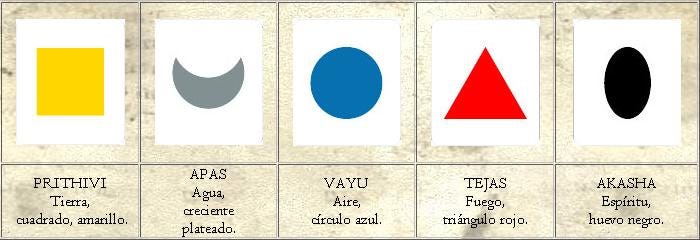
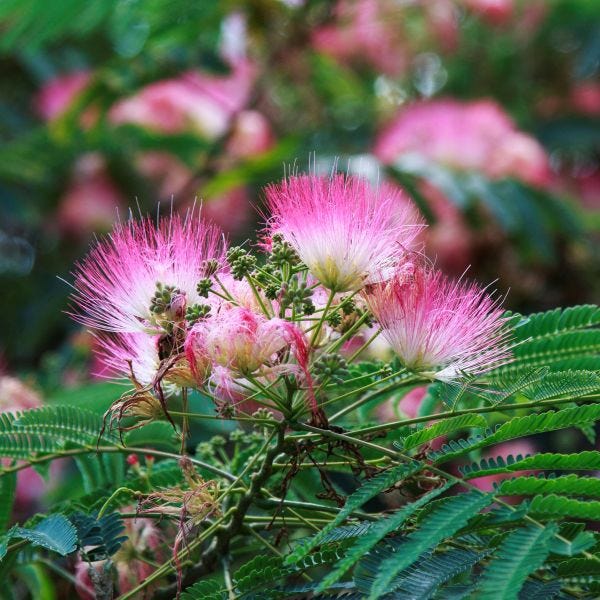
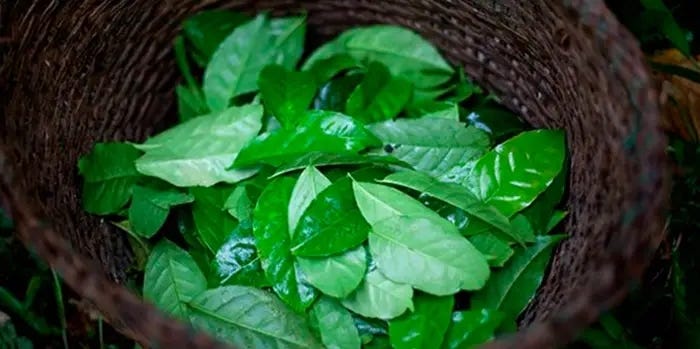


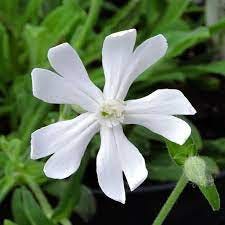
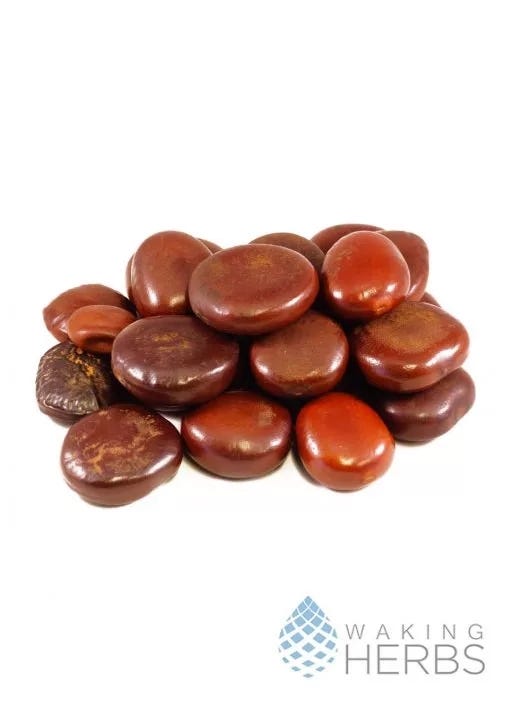
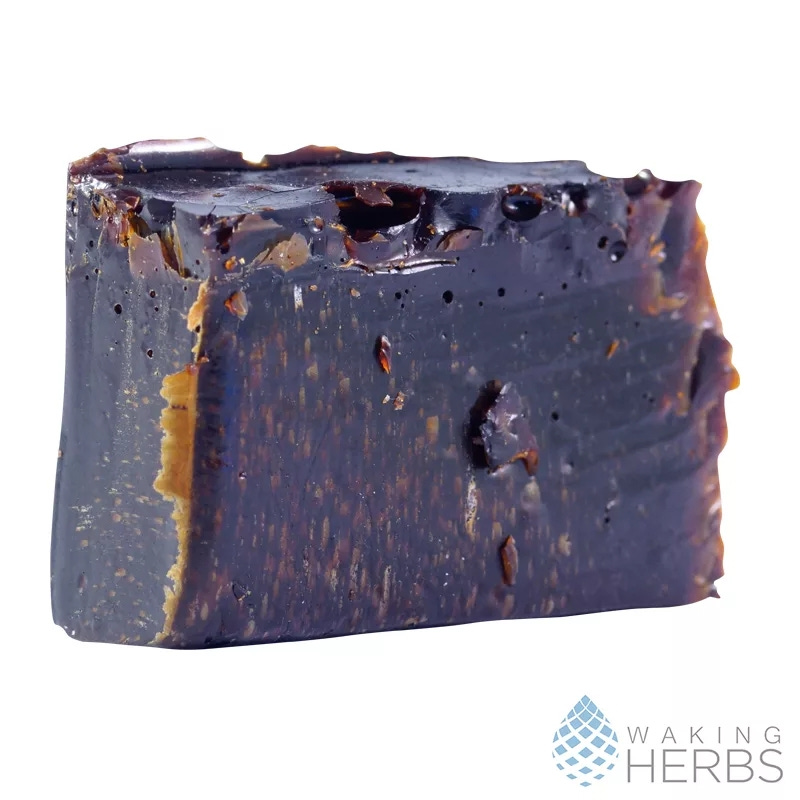

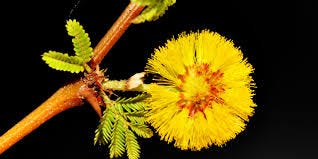

Don't forget artemisia vulgaris. This plant is amazing at inducing vivid dreams.